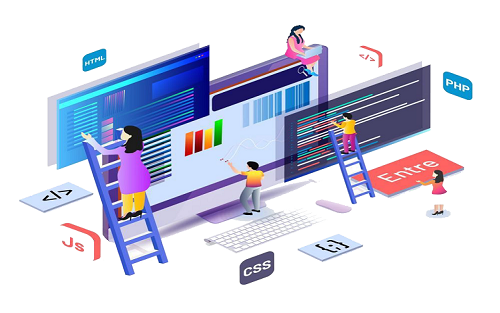
Web designing is the process of planning, conceptualizing, and implementing the plan for designing a website in a way that is functional and offers a good user experience. User experience is central to the web designing process. Websites have an array of elements presented in ways that make them easy to navigate. Web designing essentially involves working on every attribute of the website that people interact with, so that the website is simple and efficient, allows users to quickly find the information they need, and looks visually pleasing. All these factors, when combined, decide how well the website is designed.
Different Web Design Tools we used
WordPress
WordPress is the most popular CMS to create websites with attractive themes. It also consists of various free plugins that allow you to improve your website’s functionality.
Wix
A well-known website-building tool, Wix is the best choice for web designers who are not well-versed in coding. You can use a simple drag-and-drop feature to create a layout of your choice.
Squarespace
Squarespace has over a hundred website templates that you can use to create your own layouts while manipulating the visual elements.
Shopify
Shopify is among the most sought-after storefront platforms that allow you to create digital stores with certified SSL for businesses.
Our designers create the design and layout of a website with their technical expertise and knowledge while keeping in mind the client’s requirements. They have a deep understanding of UI (user interface) and UX (user experience) and are adept at using design programs for creating visual elements. With their skills and expertise, Our designers capture the brand’s identity in the design elements of the website.
Visitors rate their experience with a specific website based on its aesthetics and how intuitive it is in terms of navigation. Use Adobe, CorelDraw, Inkscape, and other design programs to create animations, graphics, icons, logos, and other elements of a website to make it as interactive as possible. We focus on the creative and visual side of the website and follow various design practices, such as symmetry, color systems, proportions, etc. to engage visitors. Additionally, they work on fonts, placement of images and videos, and creating layouts using coding languages.
We focus to transform how your brand speaks to your audience. Organizations focus on their web design more than ever and look for professional web designers for the apparent benefits it can offer. Some of these benefits include:
An Impactful First Impression
With a well-designed website, it becomes easier to make a grand first impression. For brands, it is all about how potential customers or clients view their business, and this is greatly influenced by how they view their website. Your website represents your brand, and when you focus on web designing, it can help you create a compelling and powerful first impression.
Better Google Rankings
Web designing has a variety of elements that are capable of bestowing your website with better Google rankings. Some of these elements include readability, mobile-friendliness, website speed, sitemaps, URL structure, and website navigation. A good web design has these elements incorporated into the website, which gives you greater visibility both for your audience and the search engine.
Brand Consistency
Several key assets of your brand, such as the logo, color scheme, and fonts can ensure your audience remembers your brand and easily differentiates it from thousands of others. A professional web designer takes into account all the unique aspects of your business and blends them into your website to add to your brand credibility and portray consistency.
Minimized Bounce Rates
When your website is immersive and interesting, it encourages visitors to go deeper and explore different sections of the website. Likewise, a website that is seemingly complicated and difficult to navigate can prompt visitors to exit it within seconds. Bounce rates also impact the credibility and rankings of your website. When your website is designed to retain visitors for longer, you can escape premature exits and minimize bounce rates.
Key Elements of Web Design
Website is aesthetically pleasing but fails to offer the information or help your audience with what it looks for, the aesthetics cannot make up for the lack of functionality and vice versa. Therefore, web design comprises two broad key elements—aesthetic or visual elements and functional elements—that are of equal importance to make your website stand out.
Visual Elements
Visual elements come together and set a theme for your website, which leaves a great impact on visitors when you get it right. It is crucial that every element compliments one another and looks harmonious rather than chaotic. Visual elements include:
- Fonts
- Colors
- Shapes
- Layout
- Icons
- Logos
- Images
- Video
Functional Elements
Functional elements hold great importance in terms of how the search engine views your website. However, they go beyond that and can influence user experience as well. Some of the salient functional elements include the following:
Navigation: The ease of access your website offers to your visitors to reach different sections of the website
User interaction: Offering users control by avoiding needless pop-ups, auto-play videos, or overload of information
Speed: Ensuring the page loads within a couple of seconds
Site structure: A systematic structure that is easy to navigate both for visitors and the Google web crawler
Cross-device compatibility
